
SPECTROSCOPY AND SPECTRAL ANALYSIS
Scope & Guideline
Connecting Theory to Practice in Spectroscopy
Introduction
Aims and Scopes
- Spectroscopic Techniques Development:
Research focused on developing new spectroscopic techniques, such as Laser-Induced Breakdown Spectroscopy (LIBS), Raman Spectroscopy, and various forms of infrared spectroscopy, enhancing the capabilities and precision of existing methods. - Material Characterization:
Application of spectroscopic methods for the characterization of materials, including minerals, metals, and organic compounds, providing insights into their structural and compositional properties. - Environmental Monitoring:
Use of spectroscopy for monitoring environmental parameters, including water quality assessment, soil analysis, and air pollution detection, contributing to environmental protection and sustainability. - Food Safety and Quality Control:
Application of spectral techniques in the food industry for quality control, detection of contaminants, and assessment of freshness, thereby ensuring food safety. - Biomedical Applications:
Research involving the application of spectroscopy in the biomedical field for disease diagnosis, monitoring of biological samples, and the study of biochemical interactions. - Agricultural and Plant Studies:
Investigations into the use of spectroscopy for assessing plant health, soil conditions, and agricultural product quality, aiding in precision agriculture.
Trending and Emerging
- Machine Learning Integration:
There is a significant increase in studies that incorporate machine learning algorithms to enhance the analysis and interpretation of spectroscopic data, reflecting the trend of leveraging artificial intelligence in scientific research. - Real-Time and In-Situ Monitoring:
Emerging focus on developing real-time and in-situ spectroscopic monitoring techniques for various applications, including environmental monitoring and food safety, indicating a shift towards practical, on-the-spot analysis. - Nanomaterials and Surface Enhanced Techniques:
Growing interest in the use of nanomaterials to enhance the sensitivity and specificity of spectroscopic techniques, particularly in applications like Surface Enhanced Raman Spectroscopy (SERS). - Multispectral and Hyperspectral Imaging:
Increased research in multispectral and hyperspectral imaging technologies for diverse applications, including agricultural monitoring and quality control in food products. - Environmental and Health Applications:
A notable trend towards applying spectroscopic methods for environmental protection, pollution monitoring, and public health, emphasizing the societal relevance of spectroscopy. - Interdisciplinary Applications:
An emerging trend towards interdisciplinary research combining spectroscopy with fields such as materials science, biology, and chemistry, promoting innovative solutions to complex problems.
Declining or Waning
- Traditional Spectroscopic Methods:
There is a noticeable decrease in publications focusing solely on traditional spectroscopic methods without integration with modern analytical techniques or machine learning approaches. - Basic Spectral Analysis Studies:
Research papers that primarily discuss basic spectral analysis without practical applications or advancements tend to be less frequent, indicating a shift towards more applied research. - Static Measurements:
The emphasis on static measurement techniques in spectroscopy is waning as dynamic and real-time monitoring techniques gain popularity, reflecting the demand for more responsive analytical methods. - Non-Integrated Approaches:
Decline in studies that do not integrate spectroscopy with other analytical methods or technologies, as interdisciplinary approaches are becoming more favored in research.
Similar Journals
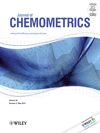
JOURNAL OF CHEMOMETRICS
Elevating the Standards of Chemometric ResearchJOURNAL OF CHEMOMETRICS is a prestigious journal published by Wiley that has been a cornerstone in the fields of analytical chemistry and applied mathematics since its inception in 1992. With an ISSN of 0886-9383 and an E-ISSN of 1099-128X, this journal occupies a notable position, reflected in its Scopus rankings where it holds the 90th rank in Applied Mathematics and the 56th rank in Analytical Chemistry. The journal, based in the United Kingdom, spans a converged publication timeline through 2024, meticulously exploring the interplay between chemical data analysis and mathematical methodologies. Though currently not open access, it offers essential insights through high-quality research articles that significantly contribute to advancing the understanding of chemometric techniques and their applications. With an impact factor demonstrating robust academic recognition, the JOURNAL OF CHEMOMETRICS serves as an invaluable resource for researchers, professionals, and students aiming to excel in the ever-evolving landscape of chemical data interpretation.
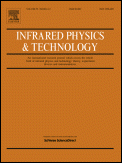
INFRARED PHYSICS & TECHNOLOGY
Pioneering Insights in Infrared Physics and TechnologyINFRARED PHYSICS & TECHNOLOGY, published by Elsevier, stands at the forefront of research in the fields of atomic and molecular physics, materials science, and condensed matter physics. With an impressive impact factor reflected in its Q2 quartile ranking across multiple categories, this journal serves as a key platform for disseminating high-quality peer-reviewed articles that advance understanding of infrared phenomena and their applications. As an essential resource from 1994 to 2024, it contributes significantly to the ongoing dialogue within the scientific community, providing researchers, professionals, and students with cutting-edge insights into electronic, optical, and magnetic materials. Although not an open access journal, its articles are widely disseminated and recounted in major databases, ensuring its pivotal role in the advancement of both theoretical and applied physics. Located in the vibrant academic hub of Amsterdam, the journal encourages innovative research that drives multi-disciplinary studies and fosters collaboration among scientists globally.
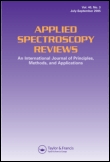
APPLIED SPECTROSCOPY REVIEWS
Illuminating Advances in Applied SpectroscopyAPPLIED SPECTROSCOPY REVIEWS, published by Taylor & Francis Inc, is a premier journal in the field of spectroscopy and instrumentation, housed in the United States. With an impressive 2023 impact factor reflecting its esteemed presence, this journal stands out in both the Physics and Astronomy (Rank #5/141, Percentile 96th) and Chemistry (Rank #6/76, Percentile 92nd) disciplines. Spanning over five decades since its inception in 1967, the journal has made significant contributions to the understanding of spectroscopy applications across a wide array of scientific fields. With a focus on publishing high-quality reviews that summarize and synthesize advances in the field, APPLIED SPECTROSCOPY REVIEWS aims to serve as a vital resource for researchers, professionals, and students alike. This journal, classified in the top quartile (Q1) for both its categories in 2023, underscores its integral role in advancing knowledge and innovation in the spectroscopy community. Though not open access, it remains an essential read for those seeking comprehensive insights and developments within the realm of applied spectroscopy.

Journal of Spectroscopy
Exploring the Spectrum of Scientific DiscoveryJournal of Spectroscopy, published by HINDAWI LTD since 2009, is a renowned Open Access journal based in Egypt that serves as a valuable platform for the dissemination of cutting-edge research in the fields of analytical chemistry, atomic and molecular physics, and optics. With the unique ISSN 2314-4920 and E-ISSN 2314-4939, this journal aims to facilitate collaboration and knowledge exchange among researchers, professionals, and students by providing unrestricted access to essential findings and advancements. As of 2023, it holds a Q3 ranking in both Analytical Chemistry and Atomic and Molecular Physics, and a Q4 ranking in Spectroscopy, indicating its growing influence and relevance within the academic community. The journal also maintains a Scopus rank of #126 in Atomic and Molecular Physics and #53 in Spectroscopy, showcasing its commitment to high-quality scholarly content. With a converged timeline from 2013 to 2024, the Journal of Spectroscopy is positioned as a pivotal resource for the latest discoveries and innovative applications in spectroscopy-related studies.

Methods and Applications in Fluorescence
Unlocking Potential with Fluorescence MethodologiesMethods and Applications in Fluorescence is a premier academic journal published by IOP Publishing Ltd, dedicated to the interdisciplinary study of fluorescence techniques and their applications across various scientific fields. With a distinguished impact factor and categorized in the Q2 quartile for 2023 in multiple domains including Atomic and Molecular Physics, Optics, Instrumentation, and Materials Science, this journal plays a crucial role in advancing research and innovation in the field. The journal's scope encompasses a rich array of methodologies and applied studies, fostering collaboration between researchers and professionals aiming to push the boundaries of fluorescence sciences. With its commitment to rigorous peer review and open dissemination of knowledge, Methods and Applications in Fluorescence is essential for anyone involved in fluorescence-related research or applications, offering insightful contributions that drive the field forward. The journal is accessible to academics from around the globe, ensuring dissemination of valuable findings and methodologies from 2013 to 2024 and beyond.
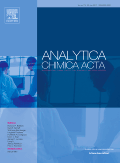
Analytica Chimica Acta
Pioneering insights in analytical and environmental chemistry.Analytica Chimica Acta is a prestigious peer-reviewed journal published by ELSEVIER, renowned for its significant contribution to the fields of analytical chemistry, biochemistry, environmental chemistry, and spectroscopy. Established in 1947, this journal has solidified its reputation, reflected in its impressive impact factors and Scopus rankings, including a Q1 classification in Analytical Chemistry and Spectroscopy, and a Q2 ranking in both Biochemistry and Environmental Chemistry. With its comprehensive scope, Analytica Chimica Acta aims to publish innovative research, critical reviews, and technical notes that advance the understanding and application of analytical methods. As an essential resource for researchers, professionals, and students alike, it encourages the dissemination of high-quality research that addresses contemporary challenges in chemical analysis and promotes interdisciplinary collaboration. While the journal operates primarily on a subscription basis, it also offers unique opportunities for authors to reach a broad audience and engage in the global scientific discourse.
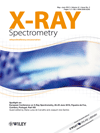
X-RAY SPECTROMETRY
Advancing the frontiers of X-ray spectroscopy.X-RAY SPECTROMETRY is a distinguished journal published by Wiley that focuses on the advancements and applications of X-ray spectroscopic techniques in various scientific fields. Established in 1972, the journal has become a prominent platform for researchers and professionals, promoting the exchange of innovative ideas and thorough investigations in spectroscopy, particularly within the realm of chemistry. With an ISSN of 0049-8246 and an E-ISSN of 1097-4539, it maintains strong visibility in academic circles. The journal currently holds a Q3 ranking in Spectroscopy, positioned at rank #52 out of 76 in the Chemistry category according to Scopus metrics, reflecting its solid standing in the field despite its percentile of 32. While X-RAY SPECTROMETRY is not an Open Access journal, it offers valuable insights and contributions from various researchers, ensuring a rich resource for those invested in the study of spectrometric applications and innovations. Researchers, students, and professionals alike will find it an essential addition to their academic library, aiding in the advancement of knowledge in spectroscopy.
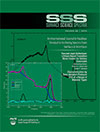
Surface Science Spectra
Illuminating the Science Beneath the SurfaceSurface Science Spectra is a critically acclaimed journal published by AIP Publishing, serving as an essential resource in the fields of Condensed Matter Physics, Surfaces and Interfaces, and Surfaces, Coatings and Films. With an ISSN of 1055-5269 and an E-ISSN of 1520-8575, this peer-reviewed journal provides a platform for sharing innovative research and groundbreaking findings, contributing to a deeper understanding of surface phenomena and their applications. While the journal operates under a traditional subscription model, its impact is recognized in its 2023 rankings where it holds a Q3 category in both Condensed Matter Physics and Surfaces and Interfaces, and a Q2 category in Surfaces, Coatings and Films. The journal has been publishing since 1992 and continues to attract contributions from leading researchers worldwide. With an emphasis on high-quality research articles, Surface Science Spectra is committed to advancing knowledge in material science and engineering, making it an indispensable reference for scholars, industry professionals, and students alike.
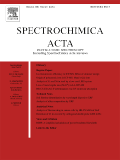
SPECTROCHIMICA ACTA PART B-ATOMIC SPECTROSCOPY
Advancing Atomic Spectroscopy Through Rigorous Research.SPECTROCHIMICA ACTA PART B-ATOMIC SPECTROSCOPY, published by PERGAMON-ELSEVIER SCIENCE LTD, is a leading peer-reviewed journal dedicated to advancing the field of atomic spectroscopy. With a respectable impact within its category—achieving Q2 quartile rankings in Analytical Chemistry, Atomic and Molecular Physics, Instrumentation, and Spectroscopy according to the 2023 metrics—this journal plays a pivotal role in disseminating high-quality research findings. Over its impressive publication history since 1967, the journal has continuously provided a platform for researchers to present innovative methodologies, theoretical advancements, and practical applications related to atomic spectroscopy. The journal is recognized for its rigorous peer-review process and aims to foster scholarly dialogue among professionals and students alike, reinforcing its significance in the scientific community. Although it does not offer open access options, its strong presence in notable databases ensures that the research reaches a broad audience. As a part of the ongoing dialogue in atomic and molecular sciences, SPECTROCHIMICA ACTA PART B is an essential resource for those at the forefront of related research.
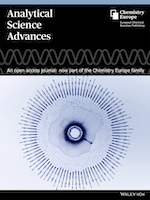
Analytical Science Advances
Empowering Discoveries in the Evolving World of Analytical ScienceAnalytical Science Advances is a dynamic journal published by WILEY, dedicated to the ever-evolving field of analytical chemistry. With an ISSN of 2628-5452, this open-access platform aims to disseminate high-quality research and insightful reviews that push the boundaries of analytical methodologies and instrumentation. Since its inception in 2020, the journal has gained traction, securing a commendable Q2 ranking in 2023 within its category, highlighting its significance in the scientific community. Currently positioned at Rank #68 out of 156 in Scopus' analytical chemistry category, it boasts a 56th percentile ranking, reflecting its contributions to advancing analytical techniques. Researchers, professionals, and students will find this journal an invaluable resource for keeping abreast of the latest developments, emerging technologies, and innovative approaches in analytical science, ensuring the journal's relevancy and influence in shaping future discoveries.